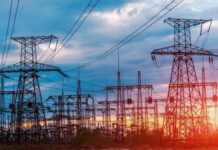- The funding volume for constructing a 300MW production plant with high-temperature electrolysis technology reaches up to EUR 36 million
- An important milestone achieved in the commercialization of SOEC technology licensed by Fraunhofer IKTS
- The high efficiency enables SOEC technology a major cost advantage in its application areas green hydrogen and synthesis gas production
- Strengthening thyssenkrupp nucera’s hydrogen technology portfolio for industrial applications through highly innovative high-temperature electrolysis (SOEC)
Dortmund – The EU has awarded funding to thyssenkrupp nucera’s pioneering SOEC project to to produce green hydrogen. The funding for the construction of a 300MW production plant using the high-temperature electrolysis technology SOEC (Solid Oxide Electrolyzer Cell) of the supplier of the world’s leading electrolysis technology can reaches up to EUR 36 million.
The funding from the EU Innovation Fund is intended to enable thyssenkrupp nucera to further advance the industrialization of the highly efficient SOEC technology licensed from the Fraunhofer IKTS with the SOEC production plant to be constructed. The details will be clarified with the EU in a further step. The EU Innovation Fund supports particularly climate-friendly projects in the fields of energy efficiency and renewable energies, as well as research and innovation.
“The EU is sending an important signal with its decision to support the construction of the SOEC production plant. Due to its high level of efficiency and great cost effectiveness, high-temperature electrolysis technology is a pioneering electrolysis technology to produce green hydrogen. It will enable companies to make an important contribution to decarbonization in the near future,” said Dr. Werner Ponikwar, CEO of thyssenkrupp nucera.
Before the start of the 300 MW SOEC production plant, a pilot plant with 8 megawatts of installed capacity is scheduled to begin operating in the first half of 2025. In Arnstadt in Thuringia, the electrolyzer stacks, the most important core component of the high-temperature electrolyzer system, are to be manufactured in initially small quantities. “Scaling up the production of the SOEC stacks will enable thyssenkrupp nucera to achieve technology and market leadership in the pioneering SOEC technology,” says Professor Dr. Alexander Michaelis, Director of the Fraunhofer IKTS.
The SOEC stack technology is based on oxygen-ion-conducting ceramic solid electrolyte, which is screen-printed with two electrodes and then connected to chromium-based interconnects. This chromium-based alloy is particularly suitable for very high temperatures. Further research and development cooperation is essential for the further industrialization of SOEC technology.
thyssenkrupp nucera and the Fraunhofer Institute for Ceramic Technologies and Systems IKTS signed a strategic partnership in March of this year. Since then, they have been working together to develop the highly innovative high-temperature electrolysis (SOEC) to market maturity. In more than 20 years of extensive research and development work, the renowned Fraunhofer IKTS has laid the foundations for SOEC technology and thus carried out the necessary preliminary work with a view to industrializing this electrolysis technology. thyssenkrupp nucera and Fraunhofer IKTS are working together to take the next steps in high-temperature electrolysis (SOEC) towards industrial application.
SOEC technology offers companies a very high level of energy efficiency. Industries with production processes that generate industrial waste heat, such as the steel industry, can particularly benefit from this. Utilizing this waste heat in high-temperature electrolysis significantly reduces electricity consumption, making this electrolysis technology to an important technology for users in thyssenkrupp nucera’s portfolio.






































